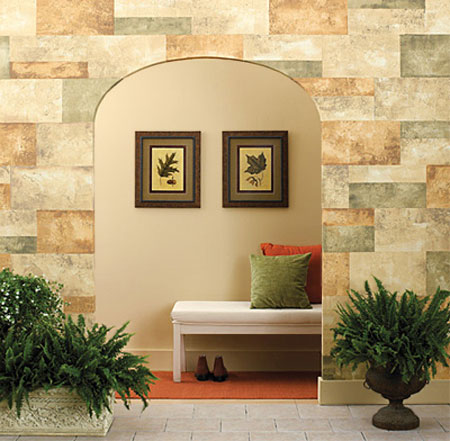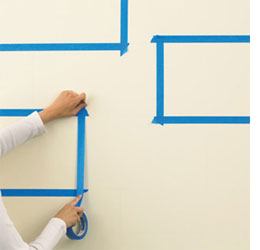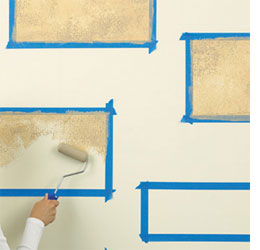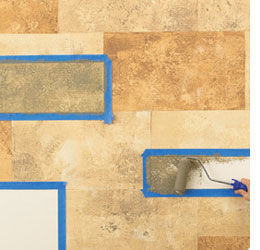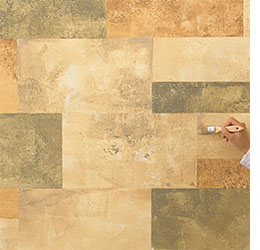Stacked stone wall with paint
Easily transform a plain wall into a feature wall with a faux-stone technique. By applying the paint in rectangles of varying sizes you can reproduce a stacked-stone effect.
To further add to the effect, this finish uses a textured paint (Prominent Paints textured paint) that gives the blocks a slightly rough, sandy surface.
Before starting to paint, plan the design on graph paper first. It's best to keep the blocks large to simplify the design visually and to make the job go more quickly. With your design drawn, map out the pattern on to wall by taping off the stones with masking tape.
To keep the cost of the project down you only need one 5 litre can of texture paint and some tubes of acrylic craft paint in your choice of colours. Mix the textured paint well with each colour before and during the painting process to keep the texturing material from settling to the bottom of the can.
YOU WILL NEED:
Prominent Paints textured paint 5 litre
Tubes of acrylic craft paint in your choice of colours
2 paint rollers with different textured sleeves
Paint tray
Masking tape
Sea sponge - optional
Clean rags
10cm paint brush
Spirit level
Tape measure
Pencil
HERE'S HOW:
Step 1
Beginning at the top of the wall, mark off 20cm horizontal guidelines. Use a spirit level to keep your lines straight. Next, mark off 30cm-wide blocks, randomly staggering them every 15cm. Selectively divide a few of the blocks horizontally into 10cm and 15cm sections. Tape off non-adjoining blocks with masking tape.
Step 2
Working with one colour at a time use a long-pile paint roller to apply the paint. Don't have too much paint on the roller - you want a light effect for the background.
Step 3
Working with your paint colours, mask off each colour block as you paint the entire wall. Experiment with applying the paint more liberally and also using a different paint roller for varying textures.
GOOD TO KNOW
Have a sea sponge handy if you want to apply more texture to the blocks.
Step 4
Emphasise the corners and edges to separate them from the adjacent blocks. Use a lint-free cotton cloth to dab and blend areas. Remove the masking tape before the paint is completely dry. Define edges using a 10cm paint brush where desired. Remove all remaining tape. Allow to dry.

